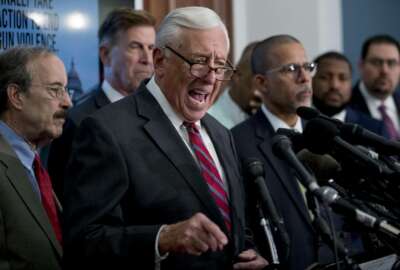
How not to move an agency
Try getting employees on board before yanking an agency 1,000 or 2,000 miles away.
Reaching a ridge on my Harley late Saturday afternoon, a long, steep downhill ahead, I caught a magnificent view of a wide vista in Montgomery County, Maryland. The cloudy, post-rainstorm sky and sideways sun gave a golden tint to the farm spreading out below and to the right. Far down at the bottom of the hill, a Postal Service delivery van, looking like a toy, turned into the farm road. With no other vehicles present, it could have been any Christmas season going back decades. I thought, “What a great looking stamp this scene would make.”
My second thought, being in the work I’m in, was, “Somebody in the federal government is always on the job, somewhere.”
The Postal Service is, literally, everywhere. And at this time of year, it’s working late. I’m out on a joyride through county back roads, but the mailman was delivering whatever mail comes to one of the last remaining farms in an increasingly urban county.
Related Stories

USDA relocation takes another key step with lease signing for permanent office space
USPS resembles many other federal agencies and departments. There’s a headquarters, and there are many field locations at which they render services.
In Congress, there’s a long history of wanting to schmear the government more evenly throughout the country. That’s partly what makes it hard for the Department of Veterans Affairs to rationalize its major medical center locations. Some ought to close, others to spring up elsewhere. But each one is a good-sized employer in somebody’s district. It usually takes an act of Congress to move an agency.
Which brings me to the latest klutzy attempt to relocate an agency: The Trump administration wants the Bureau of Land Management headquarters relocated to Grand Junction, Colorado. This move might be thoroughly justified. After all, most of the land the BLM manages lies out west. Just as every justification might have existed for the USDA’s Economic Research Bureau and National Institute of Food and Agriculture to move out to Kansas City, closer to where many of the farmers live.
But all three moves have turned into messy fights among agency management, affected employees, and Congress. Basically most of the employees didn’t want to move. People familiar with the agencies’ work argued — in one case on my own show — that the type of work done at the Washington locations should stay in Washington.
More telling to me was a comment made in the last Congress about one reorganization or another. Former Sen. Claire McCaskill told an administration official that if only the administration would present a detailed justification and plan, it would likely have 60 votes to go ahead.
Like it or not, regardless of how absolutely right you know your position is, it takes a lot of cajoling and give-and-take for even the smallest thing to happen in government. Especially if it involves people’s lives and not just policy.
You can’t just tell people, “Hey, you’re headed to Kansas City. Yes or no?” Or in the case of BLM, Grand Junction — those are fine places but relocation is a hugely difficult and fraught decision. People have connections, networks, norms and routines, as do their spouses and kids. It takes two years for people to feel totally at home in a new area. It can be more difficult for family members who might have to find new jobs, or adjust to new schools.
Moving from greater Washington, D.C. to, say, Grand Junction, also entails substantial cultural, and climate change. It’s not the Boston-D.C. corridor, that’s for sure — on Tuesday the temperature in Grand Junction stood at 15 degrees Fahrenheit.
Moving groups of people takes time, groundwork, buy-in, real communication. Ultimately, the rank and file don’t get a vote, but things go better if they’re at least nominally on board.
Copyright © 2025 Federal News Network. All rights reserved. This website is not intended for users located within the European Economic Area.
Tom Temin is host of the Federal Drive and has been providing insight on federal technology and management issues for more than 30 years.
Follow @tteminWFED





